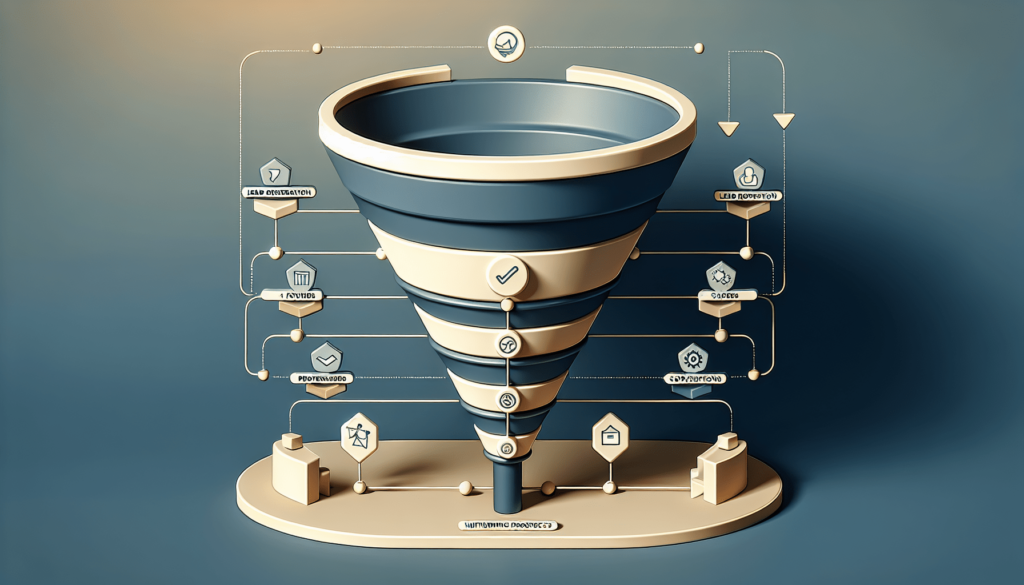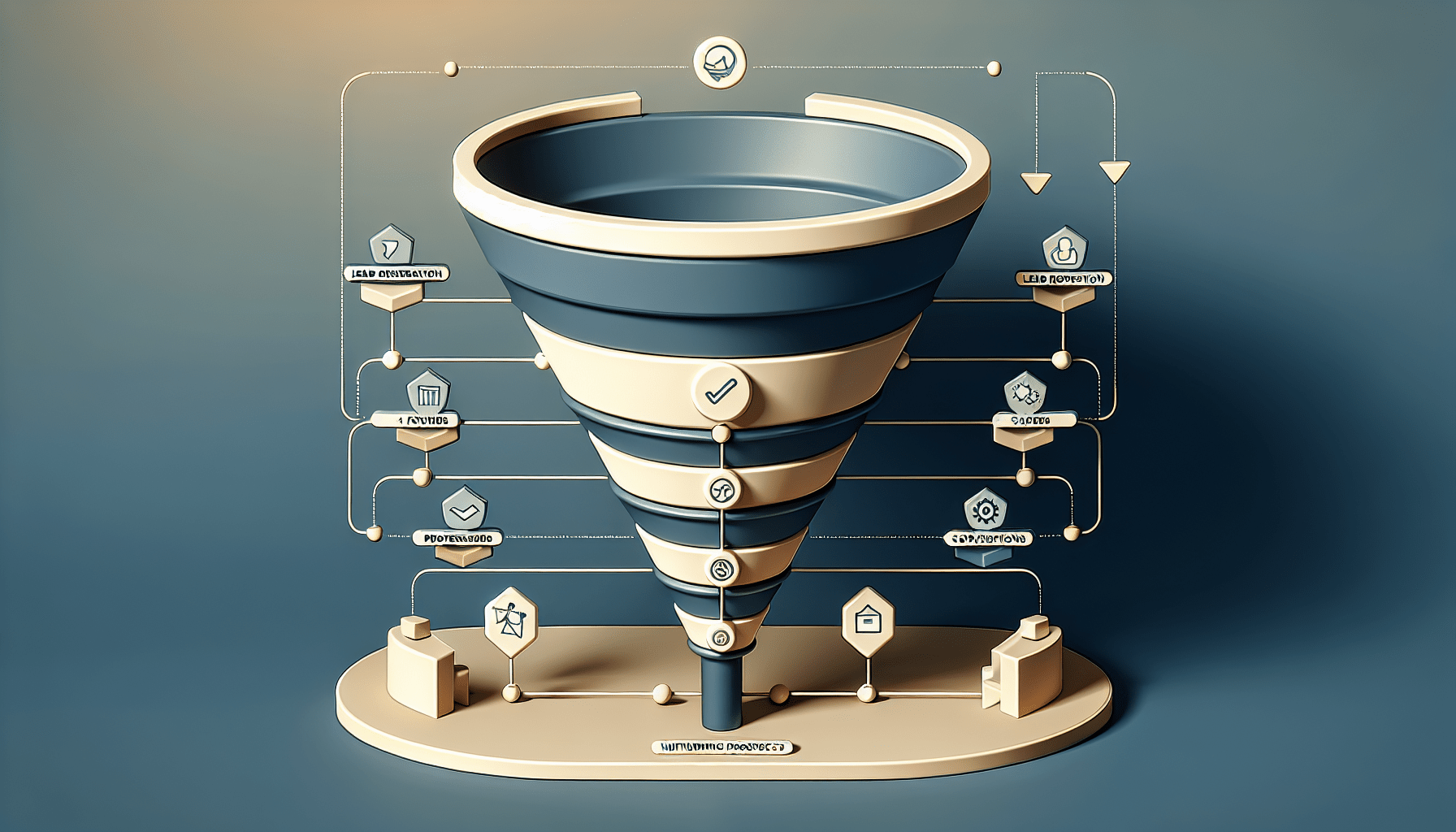So you’ve decided to take your business to the next level and start building your first sales funnel. Congratulations! In this article, we will guide you through the steps you need to take to create an effective sales funnel that will attract, engage, and convert your target audience. Whether you are a seasoned entrepreneur or just starting out, this beginner-friendly guide will provide you with the essential tips and strategies to get your sales funnel up and running smoothly. Get ready to supercharge your business and maximize your revenue potential!
Choose Your Target Audience
Identify your target market
The first step in building a successful sales funnel is identifying your target market. This involves understanding who your ideal customers are and what they are looking for. Start by examining the characteristics and demographics of your existing customer base. Identify commonalities and patterns to help paint a clear picture of who your target market is.
Define your ideal customer profile
Once you have identified your target market, it’s important to define your ideal customer profile. This involves creating a detailed description of your ideal customer, including their age, gender, interests, and pain points. Understanding your ideal customer profile will help you tailor your marketing messages and offerings to resonate with them.
Research your audience’s needs and pain points
To effectively market to your target audience, you need to understand their needs and pain points. Conduct market research to gather insights into what challenges your audience is facing and how your product or service can solve those problems. This will enable you to create compelling lead magnets and craft persuasive copy that speaks directly to your audience’s needs.
Create Attractive Lead Magnets
Understand the value proposition
Before creating lead magnets, it’s important to understand your value proposition. What unique value can you offer to your audience? Whether it’s educational content, exclusive resources, or a free trial, your lead magnets should provide tangible value to your audience. Clearly define the benefits of your lead magnets and how they can help your audience.
Design compelling lead magnets
Once you have identified your value proposition, it’s time to design compelling lead magnets. These can include ebooks, whitepapers, webinars, templates, or any other content or resource that provides value to your audience. Pay attention to the design and format of your lead magnets to ensure they are visually appealing and easy to consume.
Offer valuable content or resources
To entice your audience to opt-in to your sales funnel, make sure your lead magnets offer valuable content or resources. This could be in the form of actionable tips, industry insights, or exclusive access to tools or templates. By providing valuable content upfront, you establish trust with your audience and position yourself as an expert in your industry.

Build an Effective Landing Page
Create a visually appealing landing page
Once you have created your lead magnets, it’s time to build an effective landing page to showcase them. Your landing page should be visually appealing and aligned with your brand’s aesthetic. Use high-quality images, clear headings, and clean design to create a professional and trustworthy impression.
Craft persuasive copy and headlines
In addition to visual appeal, your landing page copy and headlines need to be persuasive. Clearly communicate the benefits of your lead magnets and how they can address your audience’s pain points. Use compelling language and persuasive storytelling techniques to engage your audience and convince them to take the desired action.
Include a clear call-to-action
No landing page is complete without a clear call-to-action (CTA). Your CTA should be prominently displayed and clearly communicate what action you want your audience to take. Whether it’s signing up for a newsletter, downloading an ebook, or scheduling a demo, make sure your CTA stands out and is easy to follow.
Drive Traffic to Your Landing Page
Utilize search engine optimization (SEO)
To drive traffic to your landing page, it’s important to optimize your website for search engines. Conduct keyword research to identify relevant keywords related to your industry and target audience. Incorporate these keywords into your website content, meta tags, and headings to improve visibility and attract organic traffic.
Leverage social media channels
Social media platforms provide excellent opportunities to drive traffic to your landing page. Identify the social media channels where your target audience is most active and create engaging and shareable content to promote your lead magnets. Utilize hashtags, influencer partnerships, and social media advertising to reach a wider audience.
Run targeted online advertising campaigns
To supplement organic traffic, consider running targeted online advertising campaigns. Platforms like Google Ads and Facebook Ads allow you to target specific demographics, interests, and behaviors to reach your ideal audience. Design captivating ads with compelling copy and visuals to entice your target audience to click through to your landing page.

Capture Leads with Opt-in Forms
Place opt-in forms strategically on your website
To capture leads, strategically place opt-in forms on your website. Consider using pop-ups, slide-ins, or embedded forms on high-traffic pages to maximize visibility. Experiment with different form placements and analyze user behavior to determine the most effective positions.
Use enticing offers to encourage sign-ups
To encourage sign-ups, create enticing offers to accompany your opt-in forms. This could be a discount code, a free resource, or access to exclusive content. Make sure the value of your offer is clearly communicated to incentivize visitors to provide their contact information.
Ensure easy and quick form submission
Optimize your opt-in forms for ease and speed of submission. Keep the form fields minimal and only ask for essential information. Streamline the form submission process by implementing technologies such as autofill or pre-filled fields. The easier it is for visitors to submit their information, the higher the conversion rate will be.
Nurture Leads with Email Marketing
Set up an email marketing automation platform
To nurture leads effectively, set up an email marketing automation platform. This allows you to automate the sending of targeted emails based on specific triggers and actions. Choose a reputable email marketing platform that offers robust automation features and integration capabilities for seamless execution.
Segment your email list based on preferences
Segment your email list based on preferences and behaviors to deliver personalized content to your audience. Group your subscribers based on demographics, interests, past purchases, or engagement levels. By sending relevant content to each segment, you increase the chances of conversion and build stronger relationships with your leads.
Send personalized and relevant content
When nurturing leads through email marketing, it’s crucial to send personalized and relevant content. Tailor your emails to address your audience’s pain points and provide solutions. Use personalization tokens to insert the recipient’s name and dynamically populate content based on their preferences. This will make your emails more engaging and increase the likelihood of conversions.
Create a Sales Funnel Workflow
Map out the customer journey
To create an effective sales funnel, map out the customer journey from the initial touchpoint to the final conversion. Identify the different stages of the funnel, such as awareness, consideration, and decision, and outline the customer’s actions and interactions at each stage. This will provide a clear roadmap for guiding leads through the funnel.
Define funnel stages and corresponding actions
Once you have mapped out the customer journey, define the specific stages of your sales funnel and the corresponding actions that need to be taken. This could include signing up for a newsletter, requesting a demo, or making a purchase. Clarify the goals and expectations for each stage to ensure a smooth transition for your leads.
Implement automation to streamline the process
Implement automation tools and systems to streamline your sales funnel process. Automation can help with lead scoring, lead nurturing, and lead segmentation, among other things. By automating repetitive tasks, you can focus on building relationships with your leads and closing deals.
Implement a Customer Relationship Management (CRM) System
Choose a suitable CRM software
To effectively manage your customer data and interactions, choose a suitable Customer Relationship Management (CRM) software. Look for a CRM system that aligns with your business needs and integrates well with your existing tools. Consider factors such as scalability, customization options, and customer support when selecting the right CRM for your organization.
Import and manage contact data
Once you have chosen a CRM system, import your contact data and organize it into meaningful categories. This could include lead source, lead status, and customer preferences. Regularly update and maintain your contact data to ensure accuracy and relevance.
Track and analyze customer interactions
Utilize your CRM system to track and analyze customer interactions. Monitor email opens, link clicks, and website visits to gain insights into your customers’ behavior. Use this data to inform your marketing and sales strategies and personalize future interactions with your leads.
Optimize and Test Your Sales Funnel
Analyze performance metrics and user behavior
To optimize your sales funnel, analyze performance metrics and user behavior. Track metrics such as conversion rates, click-through rates, and bounce rates to identify areas for improvement. Use web analytics tools to gain insights into user behavior and identify bottlenecks or areas where leads are dropping off.
Identify bottlenecks and areas of improvement
Based on your analysis, identify bottlenecks and areas of improvement within your sales funnel. This could be a low conversion rate at a certain stage or a high bounce rate on your landing page. Address these issues by optimizing your messaging, design, or user experience to increase the likelihood of conversions.
A/B test different elements for optimization
A/B testing is a powerful technique for optimizing your sales funnel. Test different elements such as headlines, CTA buttons, or form designs to determine which variations perform better. By continuously testing and tweaking your funnel, you can iterate and improve its effectiveness over time.
Monitor and Measure Results
Track conversion rates and sales performance
Continuously monitor and track conversion rates and sales performance to evaluate the success of your sales funnel. This will help you identify trends, patterns, and areas where you can further optimize your funnel. Set specific goals and key performance indicators (KPIs) to measure your progress and make data-driven decisions.
Analyze customer lifetime value (CLV)
In addition to tracking conversion rates, analyze the customer lifetime value (CLV) to understand the long-term profitability of your funnel. CLV measures the total value a customer brings to your business over their lifetime as a customer. By analyzing CLV, you can identify which customer segments are the most valuable and allocate resources accordingly.
Iterate and refine your sales funnel strategy
Based on the data and insights gathered, iterate and refine your sales funnel strategy. Implement changes and improvements based on what you have learned from monitoring and measuring results. Continuously test new strategies, adapt to market changes, and stay ahead of the competition.
Building your first sales funnel may seem daunting at first, but by following these steps and continuously refining your strategy, you can create a powerful tool for converting leads into loyal customers. Remember to always put your audience’s needs first and provide value at every stage of the funnel. Good luck!

